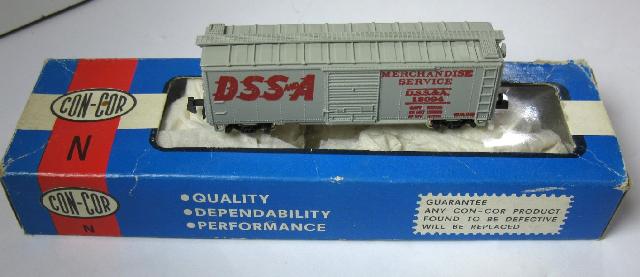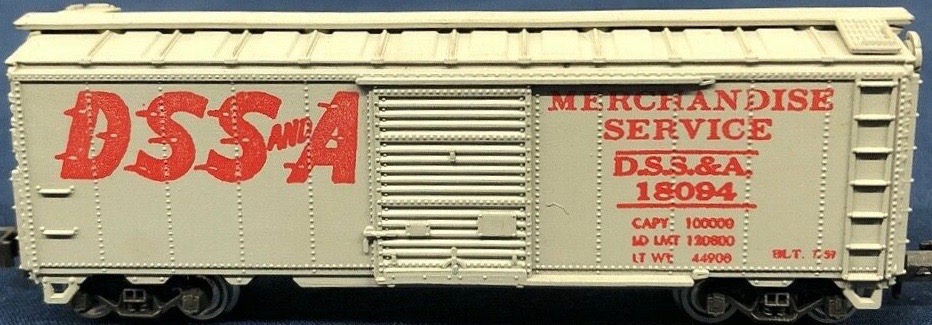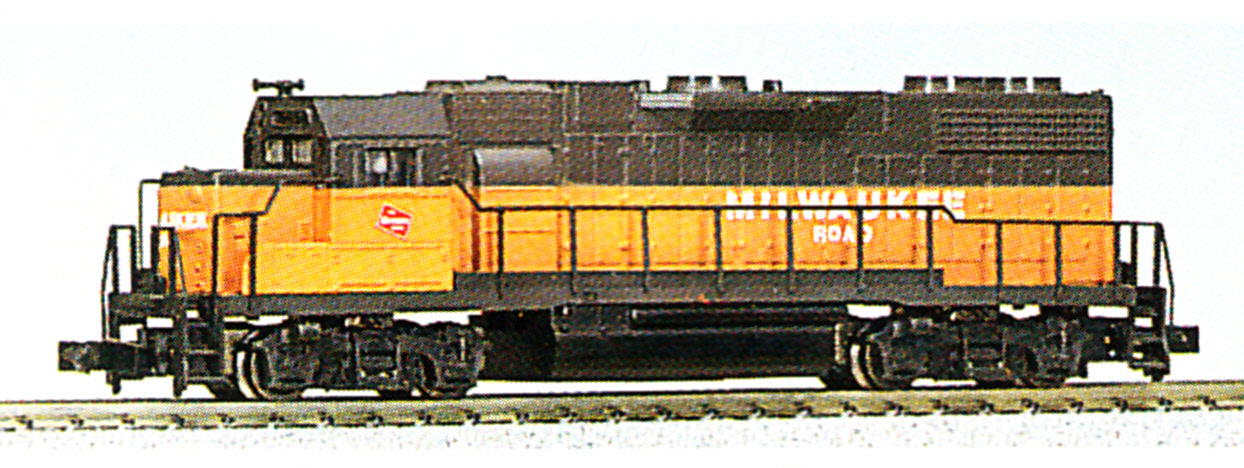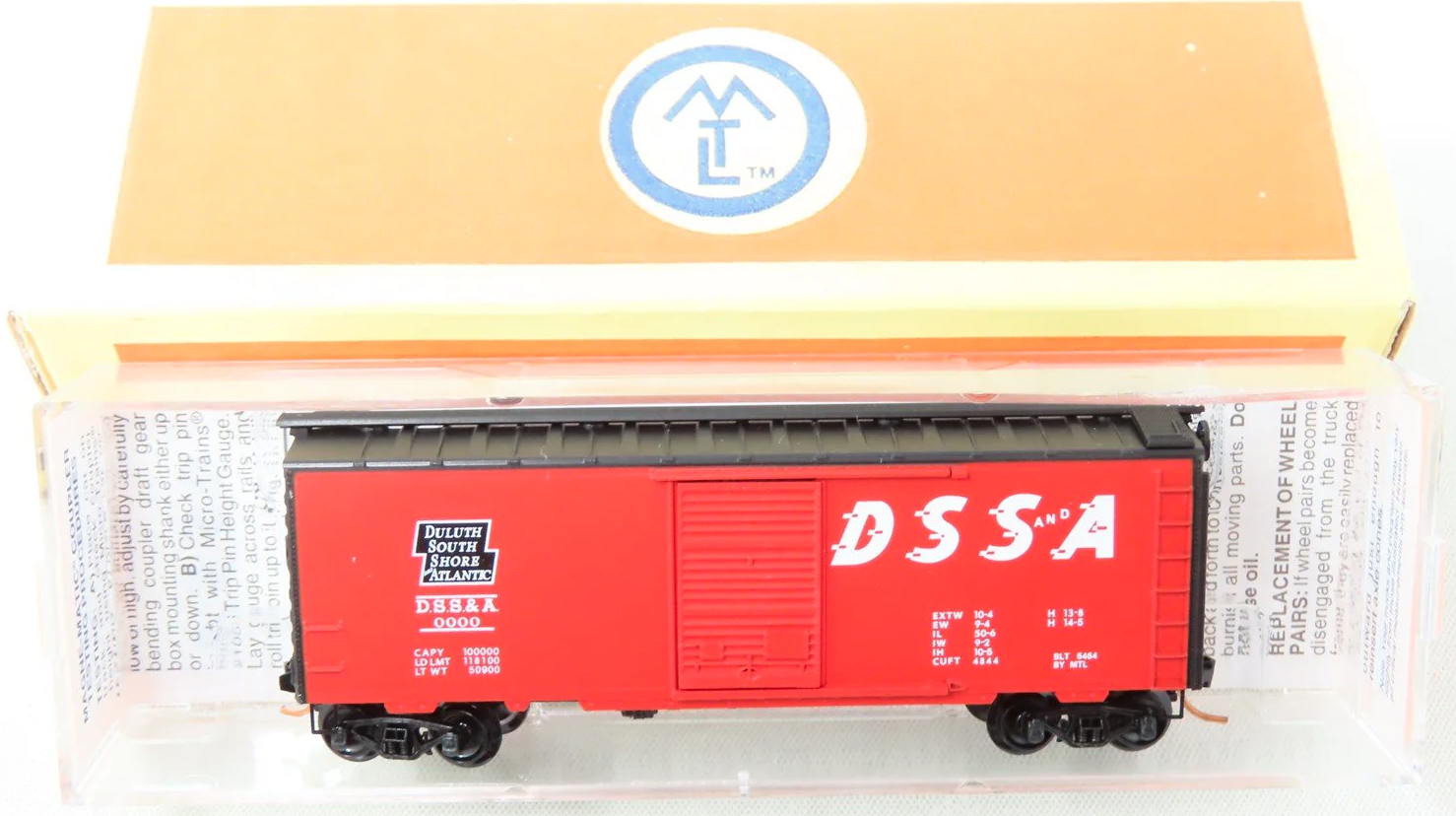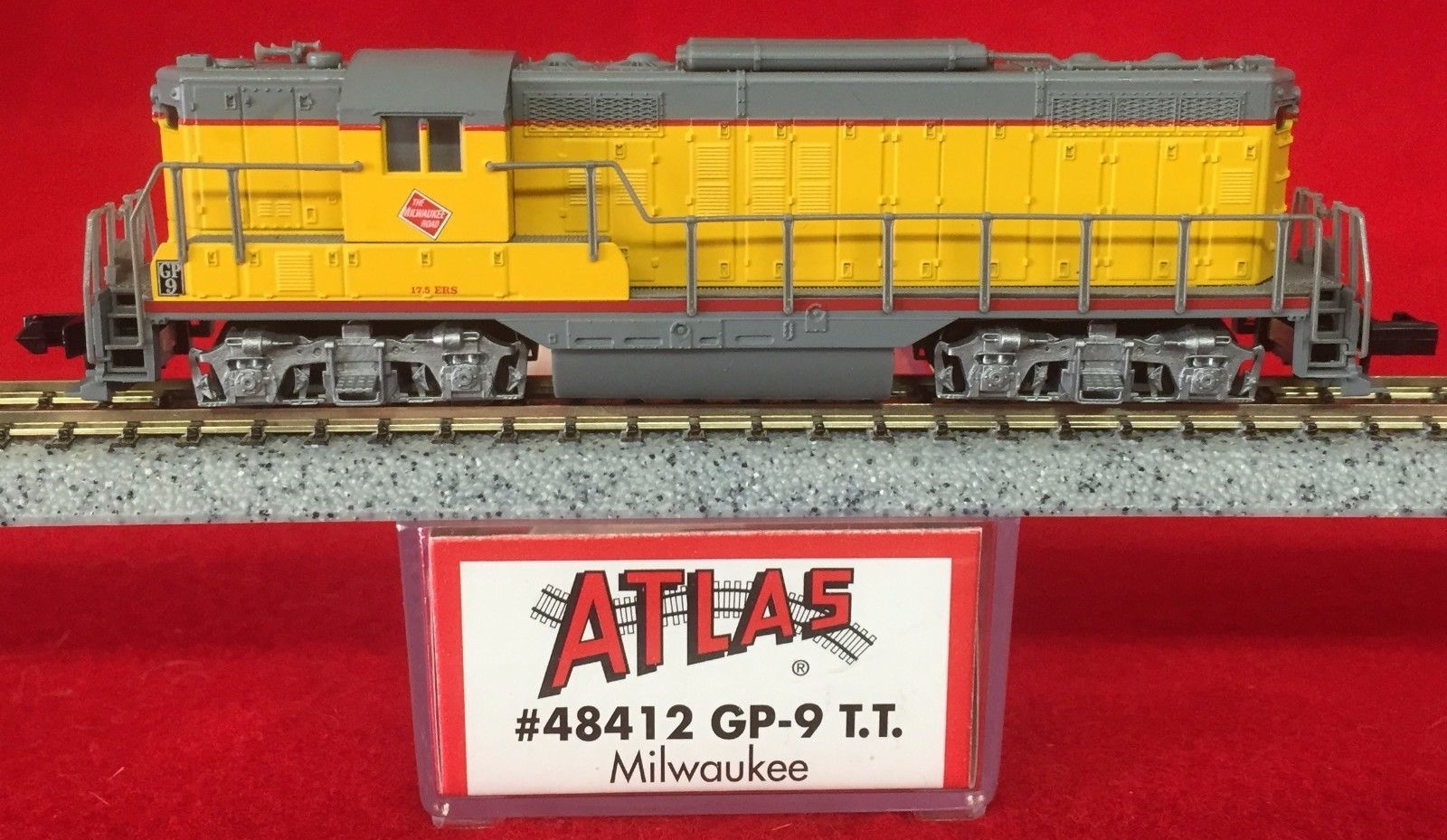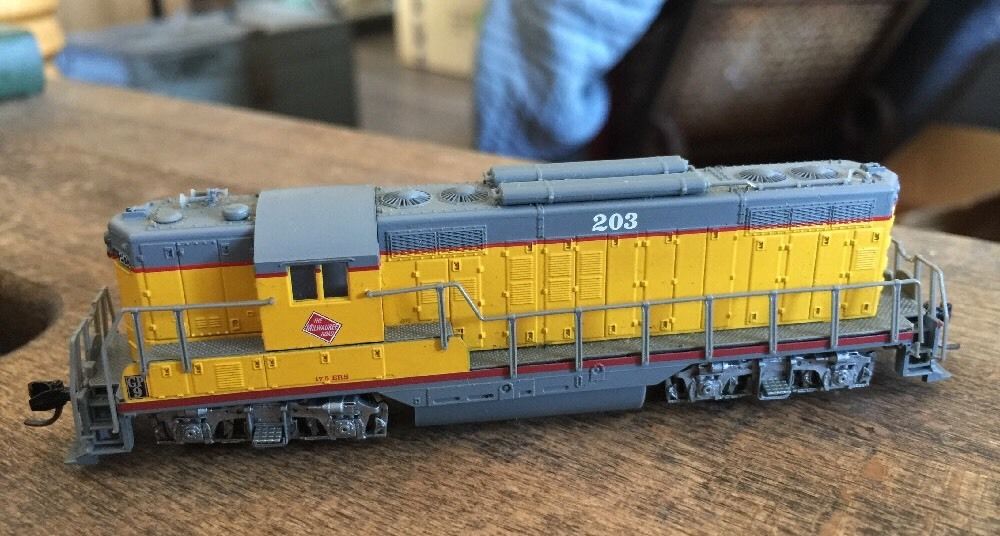Model Information: Originally, these models were produced in Japan by Kato for Con-Cor. However, since Con-Cor owned the tooling, they later decided to move the molds to their Chicago factory and later releases of the car were produced in the United States. This tooling may have been eventually moved to China when Con-Cor moved their production to China in the 1990s. ESM has produced this model in assorted paint schemes.
Prototype History: The Association of American Railroads had been establishing design standards for freight cars since the early part of the century. Each new design standard meant higher capacity, lighter, more durable cars. The 1937 standard 40' box car featured an interior height of 10'. Just prior to America's entry into the war, there was a push for an even larger interior height for the AAR standard. The first cars that would eventually be termed 1944 AAR, were actually built in 1941 but the war delayed its declaration as the standard. The new taller cars required a new design of end. Corrugated metal ends had been used since the days when wood side cars dominated for a very good reason, shifting loads would burst through wooden ends during sudden starts and stops! These corrugated panels were stamped in two sections, split horizontally down the middle. The 1937 standard had 5 ribs on one half and 4 ribs on the other -- creating what is called a 5-4 Dreadnaught end. The slightly taller 1944 model required something a little different. The lower panel has 4 ribs while the upper panel has 3 then a space and a final rectangular rib at the top. Called a 4-3-1 (or R-3-4) Improved Dreadnaught end, this design would dominate new box car construction for years.
Road Name History: 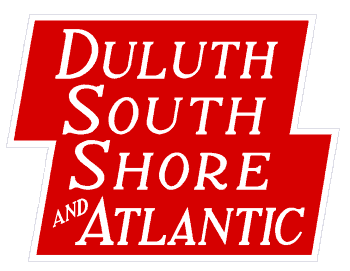 The DSS&A dates to 1887 and was chartered to build from Duluth, Minnesota eastward across Michigan’s upper peninsula, through Marquette to Sault Ste. Marie and St. Ignace. Of course there were a number of connections in Duluth. Sault Ste. Marie had a connection to Canadian Pacific and St. Ignace had car ferry service across the Mackinac Straights to a few lines in Michigan’s lower peninsula. In 1888, Canadian Pacific bought control of the company.
The DSS&A dates to 1887 and was chartered to build from Duluth, Minnesota eastward across Michigan’s upper peninsula, through Marquette to Sault Ste. Marie and St. Ignace. Of course there were a number of connections in Duluth. Sault Ste. Marie had a connection to Canadian Pacific and St. Ignace had car ferry service across the Mackinac Straights to a few lines in Michigan’s lower peninsula. In 1888, Canadian Pacific bought control of the company.
Traffic was intended to be iron and copper ore, and forest products. Other lines building into the region took most of the ore traffic, leaving the DSS&A the forest products traffic. The DSS&A paid dividends to parent Canadian Pacific in just two narrow windows over the next 65 years.
As for passenger service, locals served the mining and logging communities along the line. The closest thing to a name train was the DSS&A operation of the Duluth to Calumet, Michigan end of Milwaukee Road’s Copper Country Limited. All passenger service ended in 1958, and DSS&A’s Budd RDC’s went to parent Canadian Pacific.
The most modern steam power was in the form of former New York Central Mikados. DSS&A started buying diesels in 1947 with Alco RS1’s for use as switchers plus units with steam generators to replace steam on the passenger runs. Later, they picked up Baldwin RT series center cab transfer diesels for road service (go figure.) They were down much of the time with cracks in the frame and engine block. So DSS&A went back to Baldwin for DRS series 6-axle hood units for road service. These were operated in long-hood-forward pairs. Although the RS1’s had been delivered in plain black with yellow zebra nose stripes and yellow initials, the Baldwins were delivered in a fancy yellow, green, and Chinese red. The RS1s were repainted in this scheme as they came due for shopping. Ultimately, they did begin lashing together 3-unit sets of RS1’s for road service as well.
On December 30, 1960, Canadian Pacific’s US holdings in the area were merged. This included the Duluth South Shore & Atlantic, the Minneapolis St. Paul & Sault Ste. Marie (popularly known as Soo Line), and the original Wisconsin Central. Ironically, it’s the DSS&A’s corporate charter that was the survivor of the merger but the name of the combined line became “Soo Line Railroad.”

Traffic was intended to be iron and copper ore, and forest products. Other lines building into the region took most of the ore traffic, leaving the DSS&A the forest products traffic. The DSS&A paid dividends to parent Canadian Pacific in just two narrow windows over the next 65 years.
As for passenger service, locals served the mining and logging communities along the line. The closest thing to a name train was the DSS&A operation of the Duluth to Calumet, Michigan end of Milwaukee Road’s Copper Country Limited. All passenger service ended in 1958, and DSS&A’s Budd RDC’s went to parent Canadian Pacific.
The most modern steam power was in the form of former New York Central Mikados. DSS&A started buying diesels in 1947 with Alco RS1’s for use as switchers plus units with steam generators to replace steam on the passenger runs. Later, they picked up Baldwin RT series center cab transfer diesels for road service (go figure.) They were down much of the time with cracks in the frame and engine block. So DSS&A went back to Baldwin for DRS series 6-axle hood units for road service. These were operated in long-hood-forward pairs. Although the RS1’s had been delivered in plain black with yellow zebra nose stripes and yellow initials, the Baldwins were delivered in a fancy yellow, green, and Chinese red. The RS1s were repainted in this scheme as they came due for shopping. Ultimately, they did begin lashing together 3-unit sets of RS1’s for road service as well.
On December 30, 1960, Canadian Pacific’s US holdings in the area were merged. This included the Duluth South Shore & Atlantic, the Minneapolis St. Paul & Sault Ste. Marie (popularly known as Soo Line), and the original Wisconsin Central. Ironically, it’s the DSS&A’s corporate charter that was the survivor of the merger but the name of the combined line became “Soo Line Railroad.”
Brand/Importer Information: Con-Cor has been in business since 1962. Many things have changed over time as originally they were a complete manufacturing operation in the USA and at one time had upwards of 45 employees. They not only designed the models,but they also built their own molds, did injection molding, painting, printing and packaging on their models.
Currently, most of their manufacturing has been moved overseas and now they import 90% of their products as totally finished goods, or in finished components. They only do some incidental manufacturing today within the USA.
Important Note: The Con-Cor product numbering can be very confusing. Please see here in the article how to properly enter Con-Cor stock numbers in the TroveStar database.
Currently, most of their manufacturing has been moved overseas and now they import 90% of their products as totally finished goods, or in finished components. They only do some incidental manufacturing today within the USA.
Important Note: The Con-Cor product numbering can be very confusing. Please see here in the article how to properly enter Con-Cor stock numbers in the TroveStar database.
Item created by: gdm on 2016-10-26 16:37:43. Last edited by CNW400 on 2021-04-02 18:48:24
If you see errors or missing data in this entry, please feel free to log in and edit it. Anyone with a Gmail account can log in instantly.
If you see errors or missing data in this entry, please feel free to log in and edit it. Anyone with a Gmail account can log in instantly.


